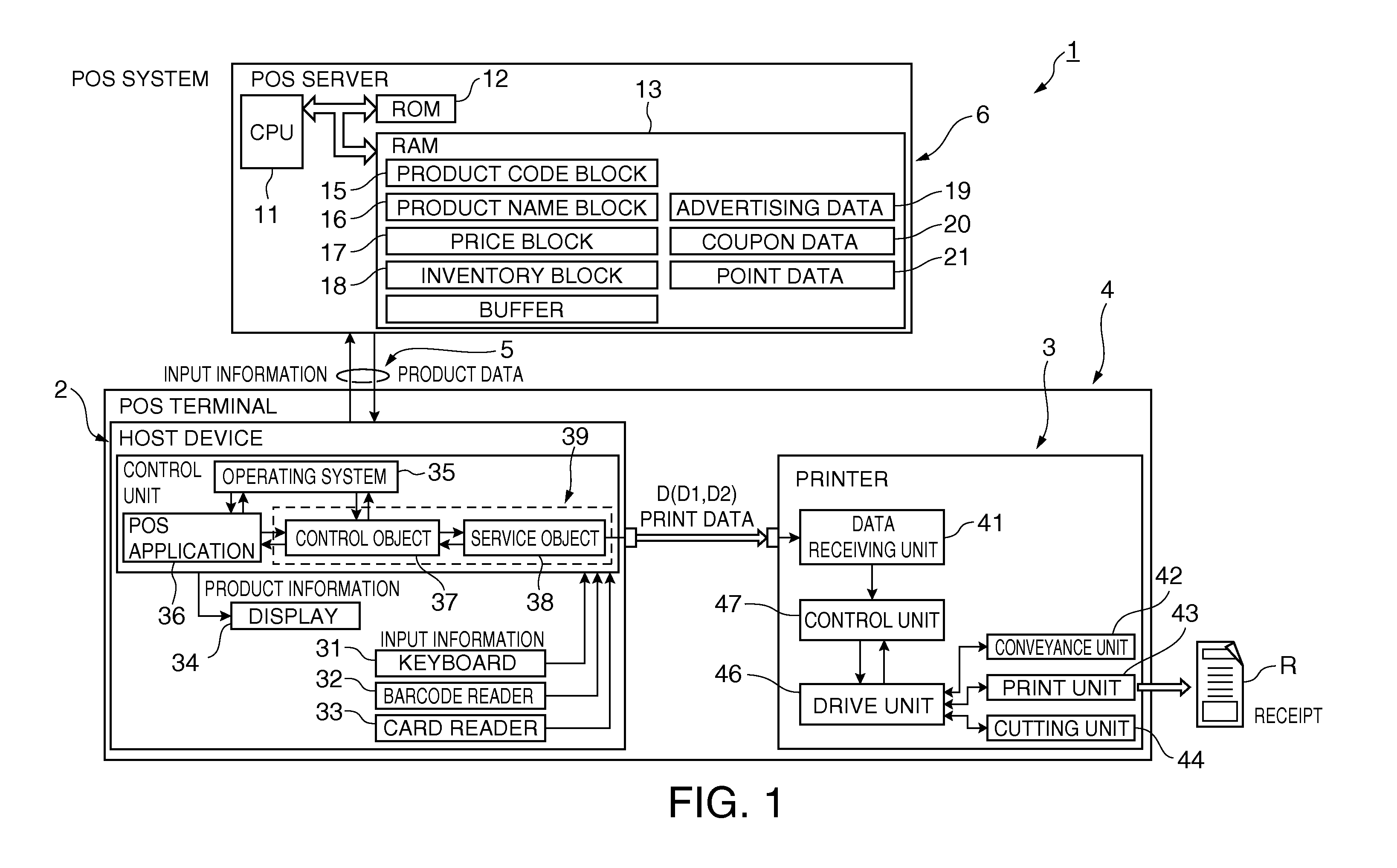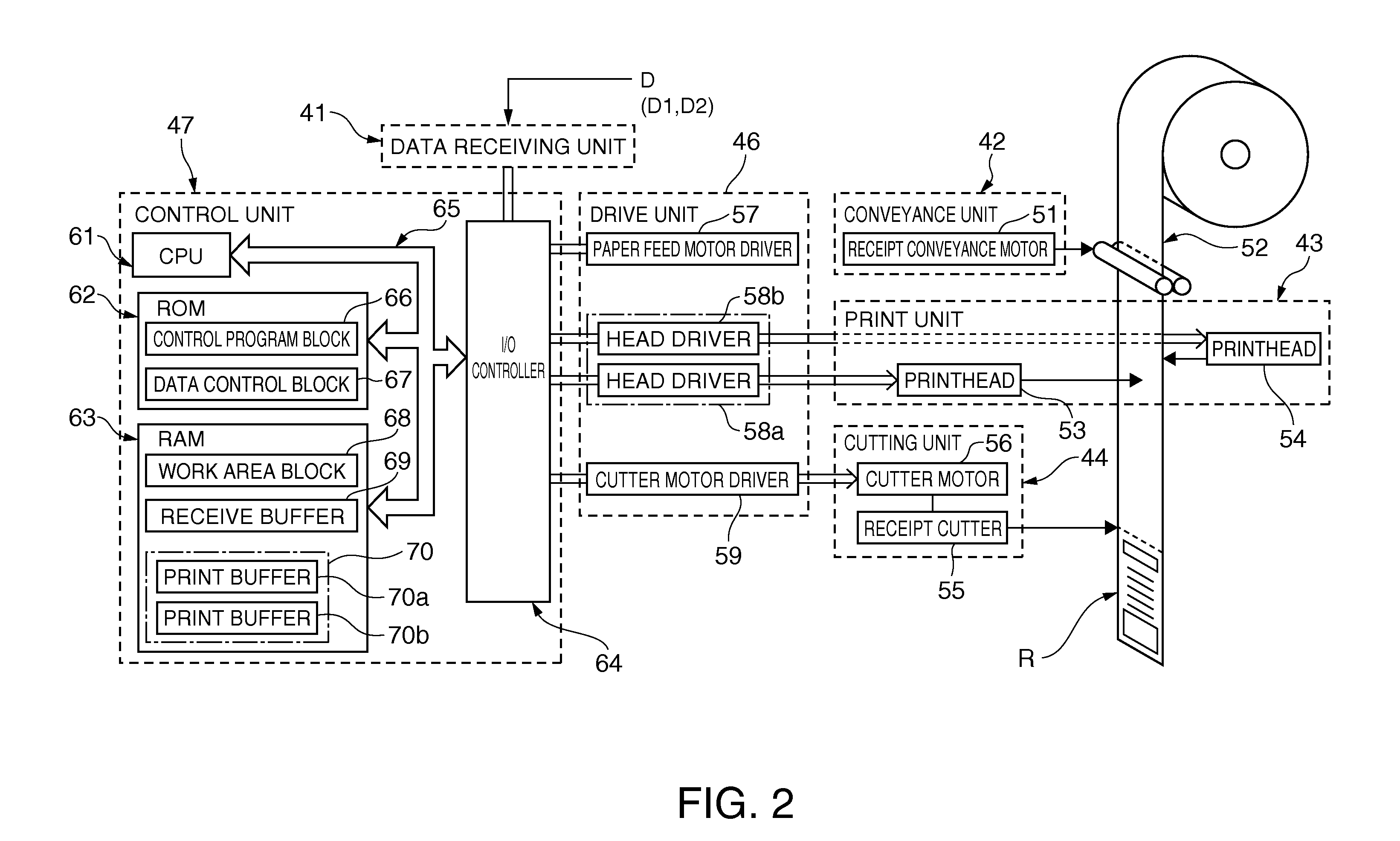Print Data Processing Method, Print Data Processing Device, And Print Data Processing System
a technology of data processing and data processing device, which is applied in the direction of digital output to print units, instruments, visual presentations, etc., can solve the problems of bleed-through and transparency, the problem of printing information on the front may be particularly easily affected, and the print on the back may bleed through to the front. , to achieve the effect of high print density and reliably preventing the effect of causing a drop in readability
- Summary
- Abstract
- Description
- Claims
- Application Information
AI Technical Summary
Benefits of technology
Problems solved by technology
Method used
Image
Examples
embodiment 1
Generating Print Data on the Host Device
[0058]FIG. 3 is a flow chart showing the steps executed by the POS application 36 of the host device 2 to generate front print data D1 and back print data D2. FIG. 4 shows an example of a method of adjusting the printing position on the receipt R, FRONT indicating the placement of the front print data D1, BACK indicating the placement of the back print data D2, and BACK AFTER ADJUSTMENT indicating the placement of the back print data D2 after printing position adjustment.
[0059]Referring to these figures, when transaction data is received from the POS server 6 side, the host device 2 generates print data based on settings stored in the printer driver 39. If duplex printing is specified, front print data D1 and back print data D2 are generated as the print data D.
[0060]First, in step ST1 in FIG. 3, data in the transaction information is allocated according to a predefined front format, and based thereon the front print data D1 is generated in st...
example 1
[0069]In the example shown in FIG. 5, when plural graphics G1 to G4 are included in the back print data of the receipt R, the printing positions are adjusted by inserting white spaces S1, S2, S3 of a constant width between the graphics as shown under BACK in FIG. 5, for example, to generate the back print data D2. When the printing position of code data B in the front print data overlaps the printing position of graphic data G4 on the back side, the front print data D1 is generated by inserting white space S11 to the printing position of code data B in the front print data as shown in FRONT in FIG. 5 so that the printing position of code data B is adjusted to a position opposite white space S4 adjacent to graphic data G4.
example 2
[0070]When printing a receipt, the format of the receipt front generally includes a fixed-length print area A1 for printing graphic data G such as a store logo at the leading end of the receipt, a fixed-length print area A4 for code data B such as a transaction ID printed at the trailing end of the receipt, and print areas A2, A3 therebetween that vary in length according to the amount of transaction data as shown in FRONT in FIG. 6. These variable-length areas include variable-length area A2 where a store notice, for example, composed of text data T is printed, and a variable-length area A3 where transaction data composed of text data T is printed.
[0071]In this case, as shown in BACK in FIG. 6, the back print data area is also divided into print areas a1 to a4 corresponding to the front print areas A1 to A4, print area a4 corresponding to the front print area where code data B is printed is set as a no-print zone for graphic data G, and the printing positions are adjusted so that g...
PUM
 Login to View More
Login to View More Abstract
Description
Claims
Application Information
 Login to View More
Login to View More - R&D
- Intellectual Property
- Life Sciences
- Materials
- Tech Scout
- Unparalleled Data Quality
- Higher Quality Content
- 60% Fewer Hallucinations
Browse by: Latest US Patents, China's latest patents, Technical Efficacy Thesaurus, Application Domain, Technology Topic, Popular Technical Reports.
© 2025 PatSnap. All rights reserved.Legal|Privacy policy|Modern Slavery Act Transparency Statement|Sitemap|About US| Contact US: help@patsnap.com



